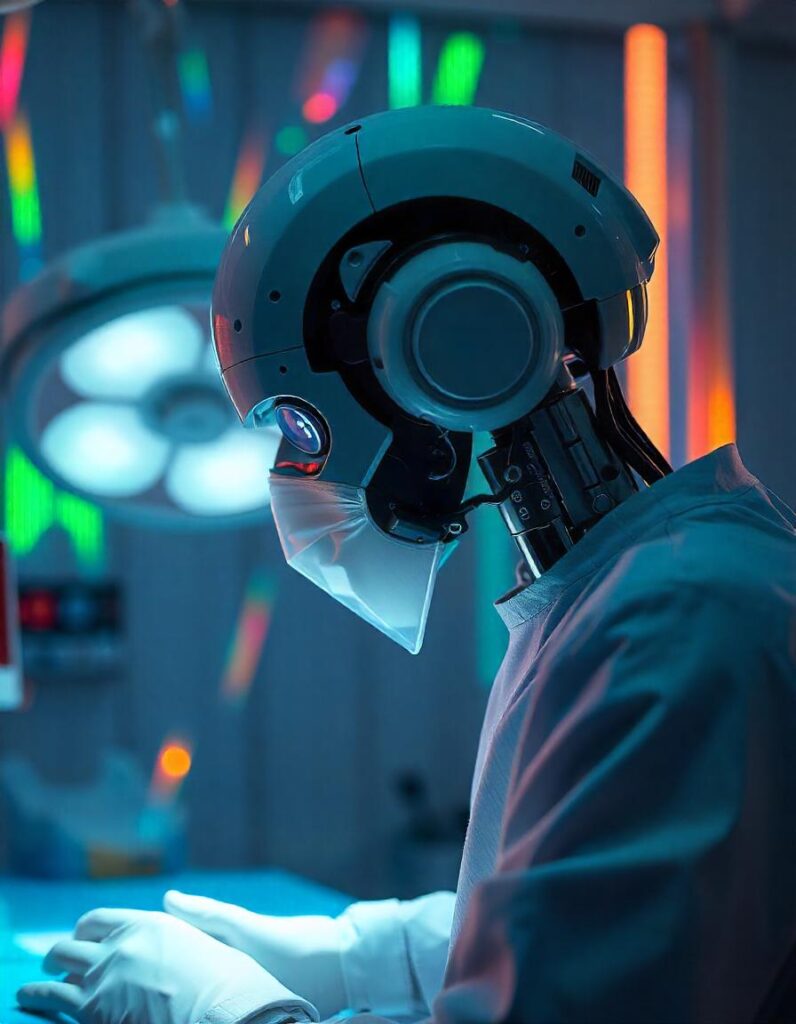What are the benefits of Robotic surgery? Picture a surgeon and realize that his or her hands get a tech boost that allows one to perform delicate operations. Sounds futuristic, right? But robotic surgery is here, and it is very likely to disrupt the global healthcare market as it has already begun to do. It’s not a trend anymore but it is a revolution! They pointed out that this kind of surgery is way more accurate than the typical approach, and it also has a list of advantages: the patients get better in less time, the scars are small, and they don’t feel much pain.
Well, what evidence exists to support such statements? Are we sure robotic surgery is safer than having the surgery done by a human being? Okay, let’s step further into the details of how robotic surgery is better and the fact that it is the way of the future.
What is Robotic Surgery?
Alright, let’s get down to something before we discuss the benefits of robotic surgery, and that is what it is in the first place. Robotic surgery involves the manipulation of surgeries by using robotic systems operated directly by the surgeons with greater precision, flexibility, and control. Some of the systems that have gotten much publicity include the da Vinci Surgical System which grants surgeons access to the human body using mechanical arms with a small camera and surgical instruments.
These systems are intended to help surgeons provide a clearer view and mastery over sensitive operations. The robot works cooperatively with the surgeon but does not take charge of the operation – the surgeon is always in control to guide the robot’s movements: the dexterity is striking, as the task is accomplished with precision more finely than could be expected from the surgeon’s hand alone.
Advantages of Robotic Surgery
1. Enhanced Precision and Accuracy
The first advantage of robotic surgery is the precision of the task to be accomplished since it is done by a robot. Specialists controlling the robotic systems are able, with higher accuracy, to complete complicated operations compared to the classical interventions. This is so since the robotic arms are somewhat more stable than human hands and they can maneuver in some movements that the human hand cannot.
For instance, in a surgery like prostate surgery or even heart surgery where every movement matters. The robot can make movements that are perhaps 1/10 the size of a human hair, something that can never be achieved with hand surgery. This makes it easy to avoid cases of mistakes and thus makes surgeries more success more frequent.
Proof: According to a study published in the Journal of Robotic Surgery, patients who underwent robotic-assisted prostate surgery had a significantly lower complication rate compared to those who had traditional open surgery (source: Journal of Robotic Surgery, 2020).
2. Smaller Incisions and Faster Recovery
The other advantage of robotic surgery is that it only needs minor cuts on the patient’s body, unlike open surgery. Conventional operations require large incisions, which take more time to heal, and also bring a lot of pain once the client is operated on. However, there are many differences to robotic surgery which employs small incisions, in some cases being only millimeters. This leads to shortened recovery time and greatly reduced pain.
Why? Mini-surgical approaches are better because they lead to less tissue trauma, which in turn reduces bleeding and chances of infection.
This allows patients to recover more quickly, often getting back to their normal routines in a fraction of the time it would take after traditional surgery.
Proof: Research by the American Urological Association found that patients undergoing robotic surgery for prostate cancer recovery had an average hospital stay of just one day, compared to up to four days for traditional surgery (source: American Urological Association, 2023).
3. Less Pain and Reduced Risk of Infection
It’s not only about making things easier for the surgeon in the operation room, but it’s also about making things easier for the patient too. The least pain as a procedure is one of the most significant benefits of the technique. Since the incisions are relatively small, little tissue is cut, and, therefore, there is little pain after the operation.
Further, smaller cuts have a reduced probability of getting infected as compared to large cuts. In a case where the body is presented to undergo surgery, the longer from the time it is opened it takes to have a scar the higher the tendency of acquiring an infection.
. Since robotic surgery is minimally invasive, patients typically experience fewer infections and quicker healing.
Proof: A study by the National Institute of Health showed that patients undergoing robotic-assisted surgeries had up to a 50% lower rate of post-operative infections compared to those who had traditional surgeries (source: National Institute of Health, 2022).
4. Shorter Hospital Stays
Since robotic surgery is less invasive, patients can go home much sooner than with traditional surgery. Many patients who undergo robotic surgery can leave the hospital within 24 hours after the procedure. This leads to lower healthcare costs and allows patients to recover in the comfort of their own homes.
Proof: The Mayo Clinic reports that patients who have undergone robotic-assisted surgery typically experience shorter hospital stays, leading to fewer complications and a quicker return to normal life (source: Mayo Clinic, 2021).
5. Greater Surgeon Control and Less Fatigue
While robotic surgery doesn’t replace the surgeon, it enhances their abilities. Surgeons can perform complex procedures with greater ease because the robotic arms are ergonomically designed and eliminate the physical strain of holding instruments for hours. This means surgeons and nurses are able to concentrate more hence being more precise most of the time of operation.
For instance, in laparoscopic surgeries, where the surgeon has to watch through a monitor, the robotic system provides a 3D high-definition view, allowing for more accurate movements. Furthermore, the movements made by a surgeon are filtered by the robotic system and eliminate the surgeon’s hand tremors, which contributes to increased accuracy.
Proof: A study in Surgical Endoscopy found that robotic surgery systems reduce the fatigue and physical strain that surgeons face during long procedures, leading to better outcomes for patients (source: Surgical Endoscopy, 2021).
6. Better Visualization for Surgeons
Actually, one of the biggest pluses of robotic surgery is the improved vision that is possible. Surgeons are able to have a 3D virtual view of the operation area, the view generally being high-definition.
In robotic surgery, the surgeon can also navigate closer to some of the regions; this means that even small entities that include blood vessels and some nerves become apparent. This decreases the probability of causing severe structural tissue problems during the process.
Proof: Studies have shown that robotic systems equipped with high-definition cameras improve a surgeon’s ability to identify key structures during surgery, leading to fewer complications (source: Journal of Clinical Medicine, 2022).
7. Surgeons Can Operate from a Distance
Another advantage of robotic surgery is that operations can be carried out from an inconspicuous location. Tele-surgery has also become a possibility because, through telecommunication and technical enhancements, surgeons can control surgical robotic arms seated from a distance. This is more helpful in such regions that lack adequate and specialized human resources that possibly may not be readily available in such remote regions.
Proof: This groundbreaking procedure, conducted on July 13, 2024, involved the surgeon operating the 5G robotic system from Shanghai while the patient was in Kashgar, approximately 5,000 kilometers away. India Today
Conclusion: The Future of Surgery is Robotic
The benefits are clear: more accuracy, fewer cuts on the body, little pain felt by the patient, faster healing time, and fewer surgery complications. For patients, this has translated to a reduced risk implication and shorter time taken to recover from injuries. For surgeons, it is more control and less exertion.
Robotic surgery is not a job for robots, but it is one of the tools that the surgeon can use to make surgeries less dangerous and time-consuming. With the increasing amount of research that indicates the safety and efficacy of robotic surgery techniques, we suggest, that contemplate that robotic surgery will remain an important and valuable tool in modern surgery, both now and in the future.
Therefore the next time you hear about a robot performing surgery, do not be alarmed, it is probably just enhancing the safety and convenience of the whole process.



